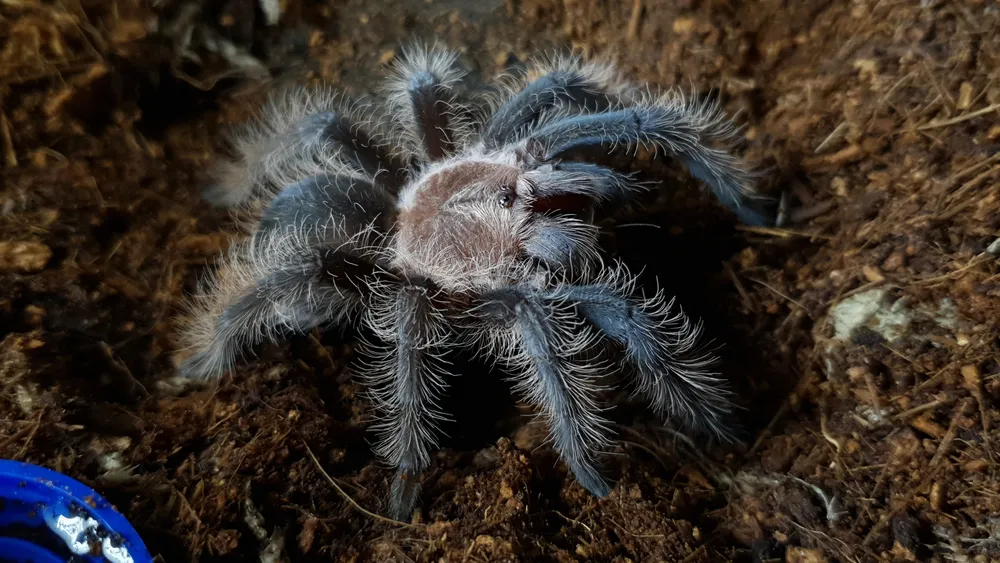Choosing the Right Enclosure
Creating a suitable habitat is paramount to the well-being of your curly hair tarantula. This guide provides essential information for beginners to establish a thriving environment. The enclosure serves as the tarantula’s home, offering shelter, and regulating its immediate surroundings. A well-chosen enclosure minimizes stress, encourages natural behaviors, and facilitates easy maintenance. The initial selection is critical and directly impacts the overall health of the tarantula. Always prioritize a secure and appropriately sized enclosure to ensure your pet’s safety and comfort. Consider factors like ventilation, ease of access for feeding and cleaning, and the material of the enclosure to make an informed decision.
Enclosure Size Recommendations
The size of the enclosure is a crucial factor for your curly hair tarantula’s well-being. While these tarantulas are terrestrial and relatively docile, they still require adequate space to move and explore. As a general guideline, a juvenile curly hair tarantula can thrive in an enclosure that is approximately 5-10 gallons. For adults, a 10-20 gallon enclosure is typically suitable. The dimensions should allow for a substrate depth that enables burrowing, which is a natural behavior for this species. Ensure the enclosure is wider than it is tall, providing more floor space for your tarantula to roam. It’s always better to err on the side of a slightly larger enclosure than a smaller one to avoid overcrowding and promote a healthy environment.
Ventilation Requirements
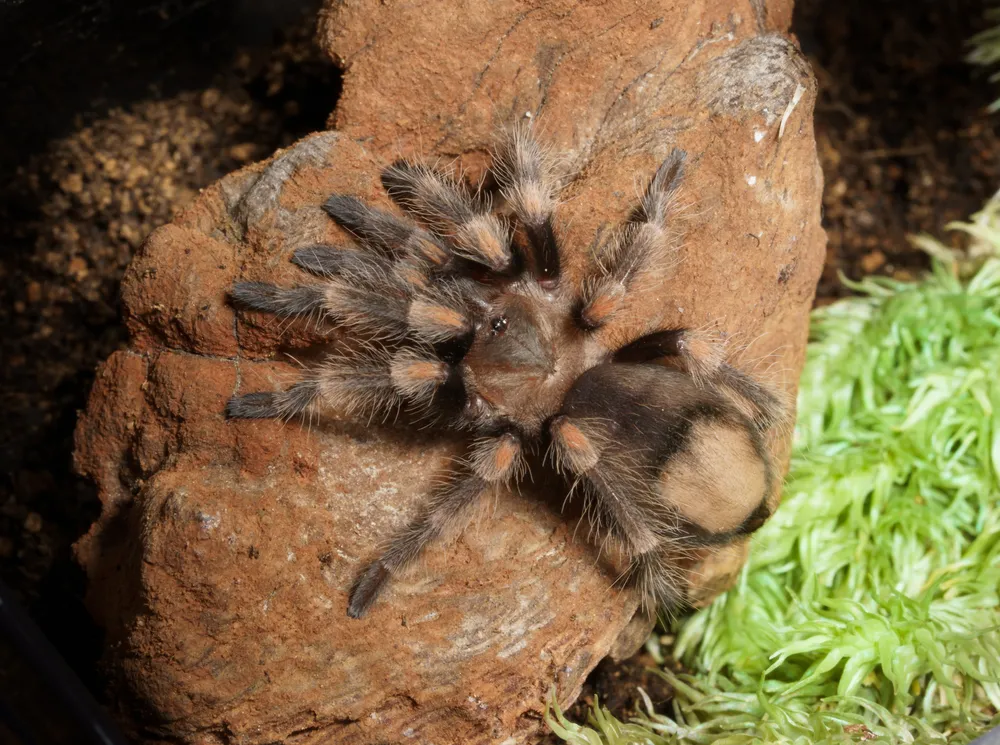
Proper ventilation is essential in a curly hair tarantula habitat to prevent the buildup of harmful humidity and stagnant air, which can lead to mold growth and respiratory issues. The enclosure should have cross-ventilation, meaning that air can flow in and out freely. Avoid enclosures with poor ventilation, such as those with only a small number of air holes, as this can create an unhealthy environment. Mesh tops or enclosures with ventilation slots are ideal. Ensure that the ventilation is secure enough to prevent the tarantula from escaping, as these spiders are skilled climbers and can squeeze through surprisingly small openings. Regularly monitor the enclosure’s humidity levels to make sure that proper ventilation is maintaining the desired balance.
Substrate Selection
The substrate forms the foundation of your curly hair tarantula’s habitat, playing a vital role in maintaining humidity, providing a surface for burrowing, and offering a natural environment. Choosing the right substrate is important for your tarantula’s overall health and comfort. The ideal substrate should be able to retain moisture, allow for burrowing, and be non-toxic to the tarantula. There are various options available, each with its advantages and disadvantages. Consider the substrate’s ability to hold moisture, its aesthetic appeal, and its ease of maintenance when selecting the right option for your pet. The correct substrate promotes natural behavior and aids in the tarantula’s molting process, making the overall habitat more suitable.
Ideal Substrate Types
Several substrate options are suitable for curly hair tarantulas. A popular choice is a mixture of coco fiber and peat moss, which effectively retains moisture and allows for burrowing. Vermiculite can also be added to increase humidity. Avoid substrates like cedar or pine shavings, as they can be toxic to tarantulas. Sphagnum moss can be used to help maintain localized humidity, especially in one corner of the enclosure. The substrate should be deep enough to allow for burrowing, usually around 4-6 inches for adults. Be sure to choose a substrate that is free of pesticides and other harmful chemicals. A well-chosen substrate supports the tarantula’s burrowing behavior and regulates humidity within the enclosure.
Substrate Depth and Maintenance
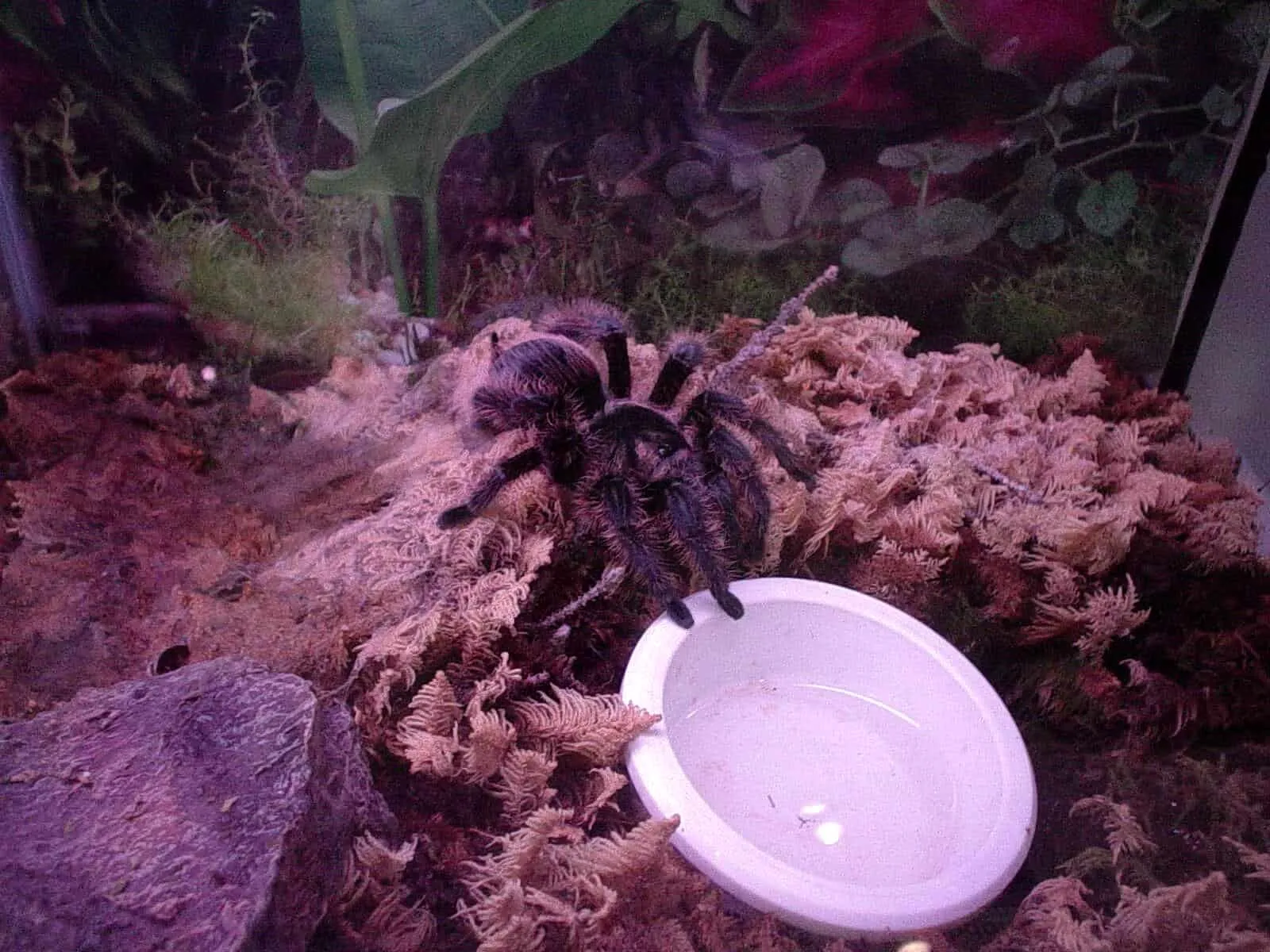
The substrate depth significantly impacts the tarantula’s ability to burrow and regulate humidity. Provide a depth of at least 4 inches for juveniles and 6 inches or more for adults to allow ample space for burrowing. Proper substrate maintenance is vital to maintaining a healthy environment. Regularly check the substrate for any signs of mold or excessive moisture, and replace it if necessary. Spot-cleaning is an important aspect of substrate maintenance, as you’ll need to remove any uneaten food and waste to prevent the growth of bacteria and mold. Add water to the substrate to maintain the desired humidity levels, but avoid over-saturating it. The substrate should be slightly damp, but not soaking wet. Regularly maintaining and cleaning the substrate is key to a healthy and comfortable environment for your tarantula.
Creating a Suitable Environment
Replicating the natural habitat of the curly hair tarantula within its enclosure is essential for its well-being. These tarantulas are native to Central America and thrive in warm, humid environments. The key elements to creating a suitable habitat include maintaining the correct temperature and humidity levels, providing appropriate hides and decor to offer security and enrichment, and ensuring proper ventilation. The combination of these factors contributes to a stress-free environment. Consider all aspects of the tarantula’s needs, including its need for shelter, humidity, and a safe place to hide and molt. The goal is to create an environment that mimics its natural habitat as closely as possible.
Temperature and Humidity Levels
Maintaining the correct temperature and humidity levels is critical to the health and well-being of your curly hair tarantula. The ideal temperature range is between 75-85°F (24-29°C). Use a thermometer to monitor the temperature inside the enclosure and adjust the heating source if needed. The humidity level should be between 65-75%. You can measure humidity with a hygrometer. To maintain humidity, mist the enclosure with dechlorinated water, especially during dry spells. Provide a shallow water dish and ensure the substrate is slightly damp. Avoid excessively high or low temperatures and humidity, as they can cause health problems. Consistent temperature and humidity levels are crucial for the tarantula’s molting process and overall health.
Providing Hides and Decor
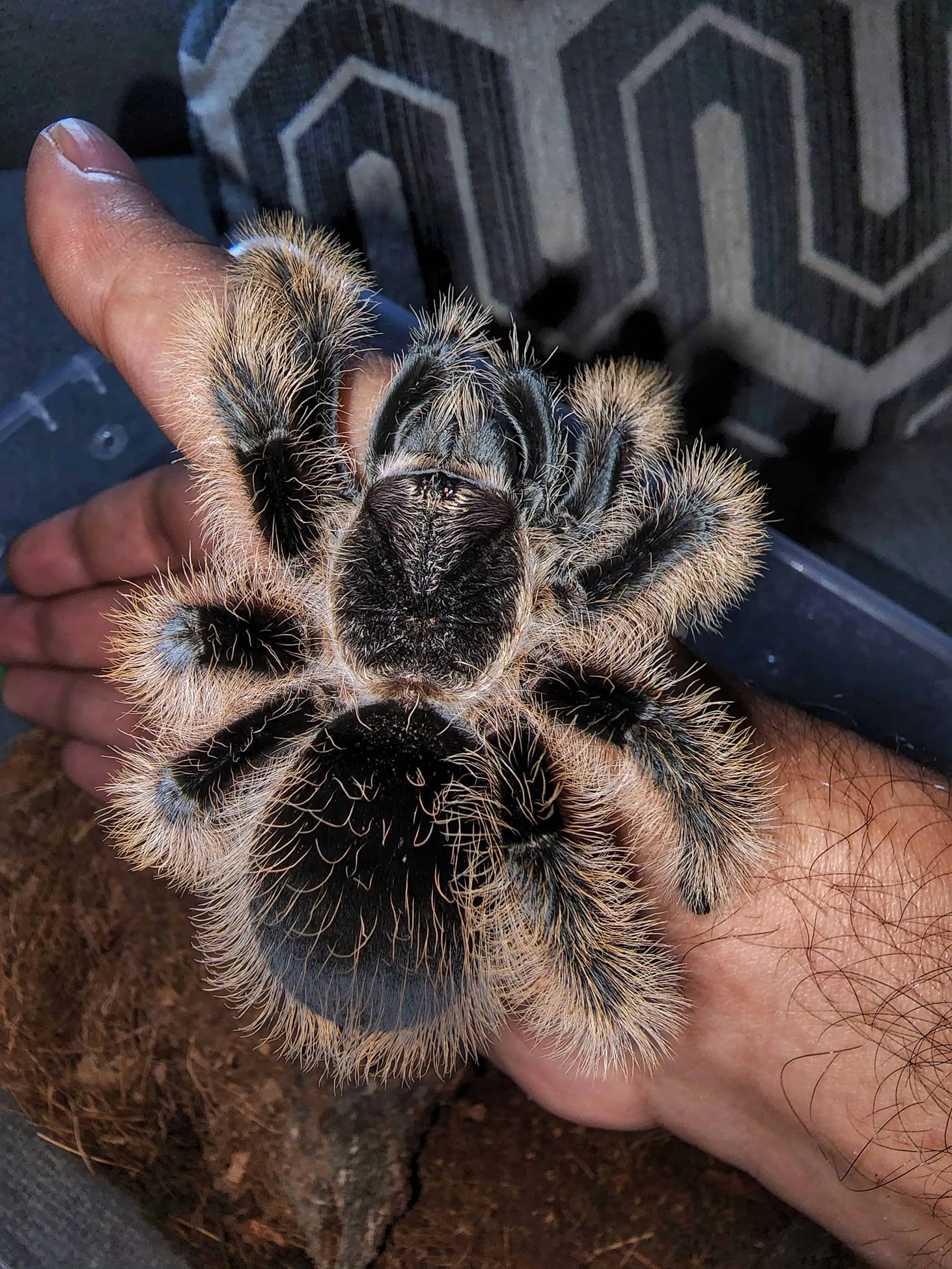
Curly hair tarantulas are naturally secretive and require hiding places to feel secure and reduce stress. Provide at least one hide in the enclosure, such as a piece of cork bark, a half-log, or a commercially available tarantula hide. The hide should be large enough for the tarantula to comfortably fit inside. Additional decor, such as fake plants, rocks, or branches, can enhance the enclosure and offer enrichment, but ensure that any decorations are non-toxic and do not have sharp edges that could injure the tarantula. Avoid overcrowding the enclosure with decorations, as this can limit the tarantula’s movement and access to the substrate. Providing a secure and enriching environment with appropriate hides and decor promotes the tarantula’s well-being.
Water and Feeding
Providing fresh water and a proper feeding schedule is essential for keeping your curly hair tarantula healthy and thriving. These tarantulas require a consistent supply of clean water and a varied diet to meet their nutritional needs. The water dish and the feeding schedule must be carefully considered to maintain the overall health and happiness of your pet. It’s important to provide water at all times and to feed them insects and other food that are appropriate for their size and growth stage. These components contribute to a comprehensive habitat that allows the tarantula to thrive and enjoy a long, healthy life.
Water Dish and Refilling
A shallow water dish is a necessity in a curly hair tarantula habitat. The water dish should be easily accessible and large enough for the tarantula to drink from, but shallow enough to prevent the tarantula from drowning. Use a small, stable dish, such as a bottle cap or a commercial water dish designed for reptiles and arachnids. Regularly refill the water dish with fresh, dechlorinated water to keep it clean and prevent bacterial growth. Change the water at least once a week, and more frequently if it becomes soiled. Make sure to clean the water dish thoroughly each time you refill it. A constant supply of clean water is essential for the tarantula’s hydration and overall health.
Feeding Schedule
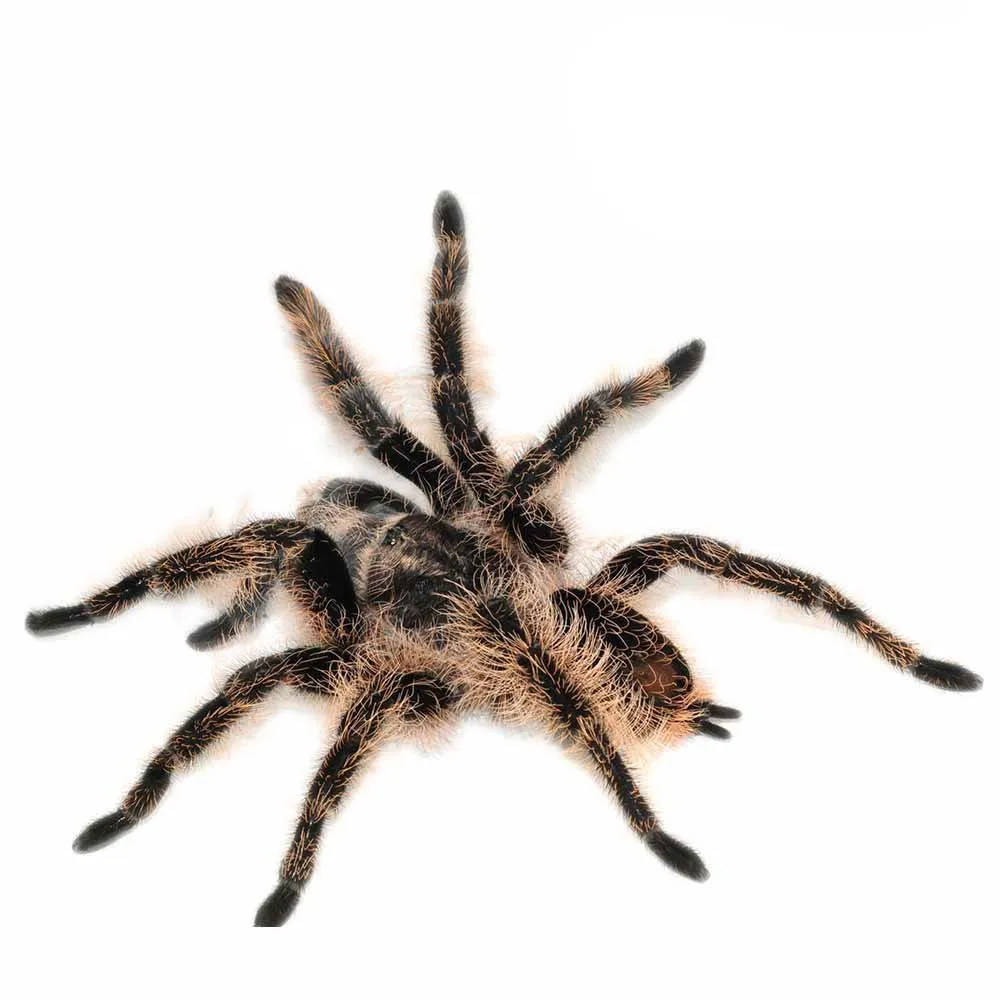
A balanced feeding schedule is important for your curly hair tarantula’s health and growth. Offer appropriately sized insects, such as crickets, mealworms, or roaches, based on the tarantula’s size. Juveniles should be fed 2-3 times per week, while adults can be fed once a week or every other week. Remove any uneaten food within 24 hours to prevent mold and bacteria growth. The feeding frequency may also depend on the tarantula’s molting cycle; a tarantula that is about to molt may refuse to eat. Ensure that the insects you feed are gut-loaded with nutritious food before feeding them to your tarantula. A varied diet, combined with a suitable feeding schedule, supports the growth and overall well-being of your tarantula.
Cleaning and Maintenance
Regular cleaning and maintenance are essential for keeping your curly hair tarantula’s habitat clean and healthy. This prevents the buildup of waste, mold, and bacteria, which can harm the tarantula. Regular cleaning also helps to maintain the desired humidity and temperature levels within the enclosure. The enclosure’s maintenance involves spot cleaning and periodic full enclosure cleaning. Following a consistent cleaning routine is important for maintaining a safe and healthy living environment for your pet. The cleaning routine will help prevent a build-up of potentially harmful substances.
Spot Cleaning
Spot cleaning should be performed regularly, ideally once a week or more often if needed. Remove any uneaten food, shed exoskeletons, and visible waste from the substrate. Use a pair of tongs or tweezers to carefully remove the waste. Avoid disturbing the tarantula during spot cleaning. Be sure to clean the water dish and refill it with fresh water. Spot cleaning maintains a clean environment and prevents the buildup of bacteria. Regular spot cleaning is a critical aspect of maintaining a healthy and balanced habitat for your curly hair tarantula. By focusing on removing immediate waste, you’ll help maintain the health of your pet.
Full Enclosure Cleaning
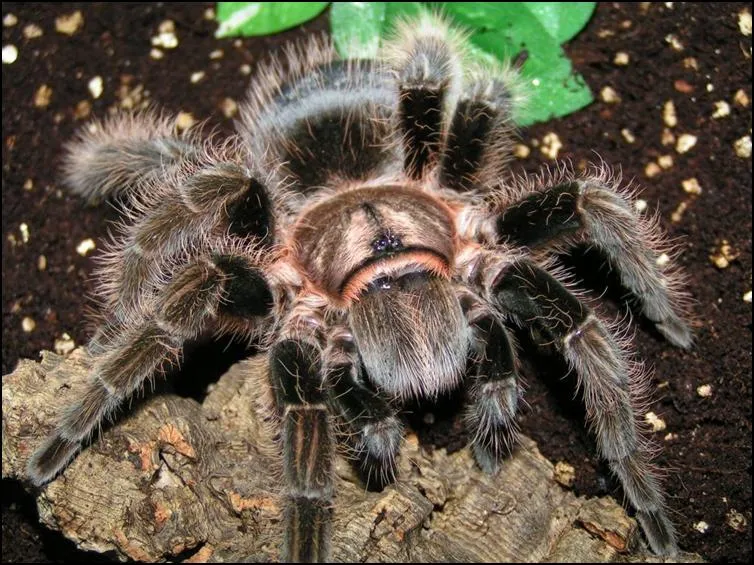
Full enclosure cleaning should be performed every few months, or as needed, to maintain optimal hygiene. Carefully remove the tarantula from the enclosure and place it in a secure temporary container. Remove all substrate, decorations, and the water dish. Thoroughly clean the enclosure with a mild, unscented soap or reptile-safe cleaner. Rinse the enclosure thoroughly to remove any soap residue. Replace the old substrate with fresh, new substrate. Allow the enclosure to dry completely before returning the decorations and the tarantula. This process removes all bacteria. Regular and thorough cleaning will support your tarantula’s health.
